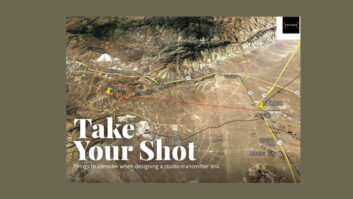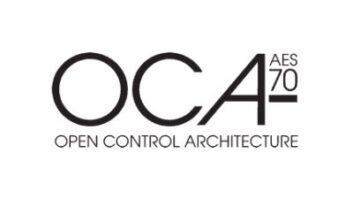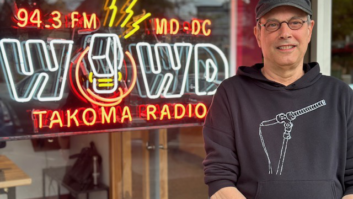IBOC Update – Aug 18, 2004
Aug 18, 2004 12:00 PM, By Mark Krieger, CBT

Stay up to date on the latest IBOC news, business and technology information with the twice-monthly newsletter from Radio magazine.
Index:
- Canada’s DRRI Restructures
- UK DAB Falling Short of Promises, Critics Charge
- Mobile Satellite Broadcasts Debut in Far East This Fall
- CPB Seeks Proposals for IBOC PAD Initiative
- Cox Set to Accelerate IBOC Rollout
- IBOC by State: Minnesota
- Final Sparks Fly as IBOC Comment Deadline Expires
- KCSN-FM Tests IBOC Booster in LA
- An Introduction to the New Language Surrounding HD Radio
To receive these articles twice a month in your e-mail, subscribe to the IBOC Update – Insight on HD Radio e-newsletter. Click here to subscribe.NewsCanada’s DRRI Restructures
At a special meeting of its members held on July 21, Digital Radio Roll-Out Inc. (DRRI), an organization mandated to ensure the promotion of digital audio broadcasting (DAB), restructured the organization, appointed a new Board of Directors, and endorsed a plan to re-focus its mandate.DRRI is a non-profit joint initiative of major private broadcasters Astral Radio, CHUM Ltd., Corus Entertainment, Rogers Media and Standard Radio, a number of smaller private broadcasters, and CBC/Radio Canada with a mandate to introduce digital audio broadcasting services across Canada.As an independent corporation with the support of the Canadian government, DRRI has entered into an agreement with the CAB designed to achieve greater efficiency by taking advantage of available expertise to reduce its operating costs. Because the CAB provides DRRI with professional services, the organization will shift its primary focus away from marketing in order to track digital audio broadcasting activities and regulatory issues fundamental to Canadian DAB advancement.The organization says it will retain an engineering consultant to follow all DAB activities while managing relevant policy and technical filings. The consultant will also develop and manage liaison with the CRTC, Industry Canada, Canadian Heritage and Communications Research Centre, and will serve as Canadian DAB point of contact with WorldDAB, as well as the receiver, automotive and retail electronic industries.Glenn O’Farrell, president and CEO, Canadian Association of Broadcasters (CAB), was appointed DRRI interim president.UK DAB Falling Short of Promises, Critics Charge
Implementation of DAB in the Great Britain is failing to live up to its sonic potential according to its critics. Some observers claim that although DAB is capable of producing excellent audio quality, many of the UK’s DAB transmissions are encoded at minimum bit rates, and in some cases offer only mono versions of services that can be received in stereo with better audio quality on existing analog transmitters.According to Digital Radio Tech, the problem with DAB in England is that bit rates have been stretched too thin. The site, which covers all forms of digital radio including DRM, claims that the UK has the lowest quality on DAB in the world. It backs up its claim with a chart that shows the average bit rate for stereo music stations excluding the UK is 182kb/s, while in the UK it’s only 129kb/s. European DAB uses 12 year-old MPEG 1 Layer 2 coding, which requires a data rate of 256kb/s to achieve something approaching true CD quality.To make matters worse, Digital Radio Tech says that a significant and increasing number of music stations on DAB use mono instead of stereo. Much of the blame for this situation is attributed to the now-defunct Radio Authority, which regulated DAB in the UK until the end of 2003.According to the BBC, the root cause of the poor performance of Britain’s DAB is insufficient available bandwidth, resulting in a situation which the public-supported broadcast corporation says is “far from ideal.” With only one DAB allocation, BBC’s DAB multiplex is now so full that regular program channels often have their bit rates further reduced in order to accommodate special sports programming.Those criticizing the status quo say that legislation is needed to compel broadcasters to maintain a minimum bit rate of 192kb/s for music stations and 128kb/s for speech stations. 192kb/s is believed to be the most popular rate for DAB stations in the rest of Europe.Mobile Satellite Broadcasts Debut in Far East This Fall
Beginning this October, subscribers in Japan and Korea will have a chance to sample a new mobile satellite service that beams programming directly to automobiles and mobile phones, as Japan’s Mobile Broadcasting Corporation (MBCO) joins Worldspace, Sirius and XM Radio in offering subscription broadcast services to consumers on the go. But unlike other pioneer satellite radio service providers, MBCO will be the first to offer streaming video as well as audio program channels.In the works since 1998, MBCO was organized to provide cars and hand-held devices with satellite DAB, video and data services throughout Japan. Service in the Republic of South Korea will be provided by TU Media, which will concentrate primarily on TV.The Loral-built satellite operates in a 25MHz-wide S band (2.6GHz) allocation set aside for mobile satellite broadcasting using code domain multiplexing (CDM). Although the transponder produces a powerful 1.2kW ERP signal, terrestrial gap fillers are used to fill in signal holes in urban or other obstructed areas.The new system will offer a total of 28 audio and seven TV channels, and required authorization by both governments as well as the International Telecommunication Union (ITU). Audio channels will utilize an AAC LC coder configurable for stereo, mono and dual-channel operation with a maximum bit rate of 144kb/s. Video channels will be streamed using MPEG-4 v.1 compression with a maximum bit rate of 384kb/s.MBCO investors include Toshiba, SK Telecom, NTT Data, Mitsui Sumitomo Insurance, Toyota, Fujitsu, Nippon TV and Panasonic.Technology/ApplicationsCPB Seeks Proposals for IBOC PAD Initiative
The Corporation for Public Broadcasting is currently soliciting proposals for a project to support public radio’s implementation of the program-associated data (PAD) capabilities of the Ibiquity HD Radio standard.As implemented in the first generation of HD Radios, the PAD capability is intended to convey information regarding the station and its programming for use by listeners. Evidence from a March 2004 CPB PAD panel suggests that, for FM stations at least, PAD services and secondary audio services may be even more compelling to listeners than will be the improvements HD Radio provides in audio quality.The PAD initiative’s primary goal is to develop a clear vision and framework for basic, first-generation PAD services to be used at public radio stations. CPB is prepared to invest up to $250,000 in the initiative, but is encouraging applicants to apply additional resources to the initiative, directly or through partnerships. The request for proposals (RFP) is open to any party, organization or partnership that can support the primary objectives of the program: - Estimation of capitol and operating costs for widespread implementation of a PAD system.
- Development of a practical means of extending PAD functionality through currently available RDS subcarriers and public radio websites.
- Exploration of extending PAD functionality through HD Radio secondary audio channels (SACs) in 2nd generation HD Radio receivers.
- Development of an operational PAD system design for distributors, producers and stations along with a metadata standard for PAD services.
- Demonstrations of PAD services to the public radio community at various industry gatherings.
Proposals for the Program Associated Data Initiative will be accepted by CPB from Aug. 9, to Sept. 10, 2004.Those interested in participating in or learning more about CPB’s PAD initiative can access the entire RFP document at www.cpb.org/digital/funding/pad/pad_rfp.pdf.BusinessCox Set to Accelerate IBOC Rollout
Cox Radio has joined the ranks of large radio groups planning to aggressively expand the rollout of IBOC digital radio by committing to convert 80 percent of its stations to Ibiquity’s HD Radio architecture over the next four years.Speaking from the company’s Atlanta headquarters last week, Cox Radio president and CEO Robert F. Neil said that the benefits of IBOC digital broadcasting are worth the investment. “Digital radio represents the future of radio”, Neil observed; “With the technology now ready for broad based deployment, we are stepping up our efforts to provide digital radio to our listeners.”The Company currently offers IBOC digital radio signals in the Atlanta, Orlando and Miami markets.In going public with its plan, Cox follows the lead of two high-profile ownership groups, Clear Channel and Entercom, both of which have made similar announcements in the past month. The announcement places Cox in an expanding pool of other radio owners, such as Greater Media, Beasley and Susquehanna, now firmly committed to IBOC DAB technology.Cox Radio owns, operates or provides sales and marketing services for 78 stations (67 FM and 11 AM) clustered in 18 markets, including Atlanta, Houston, Miami, Orlando, San Antonio and Tampa.IBOC Across AmericaIBOC by State: Minnesota
Ibiquity has a list of stations that have licensed HD Radio technology and notes those that are on the air now. IBOC by State will look at various states and list the stations that are making the transition.StationFormatMarketOwnerOn Air KBPR-FM 90.7 Classical Bemidji Minnesota Public Radio No KCRB-FM 88.5 Classical Bemidji Minnesota Public Radio No KNBJ-FM 91.3 News/Talk/Info Bemidji Minnesota Public Radio No KBPN-FM 88.3 News/Talk Brainerd Minnesota Public Radio No WIRN-FM 92.5 News/Info Duluth Minnesota Public Radio No WIRR-FM 90.9 Classical Duluth Minnesota Public Radio No WLSN-FM 89.7 News/Info Duluth Minnesota Public Radio No WMLS-FM 88.7 Classical Duluth Minnesota Public Radio No WSCD-FM 92.9 Classical Duluth-Superior-WI Minnesota Public Radio No WSCN-FM 100.5 News/Info Duluth-Superior-WI Minnesota Public Radio No KCCD-FM 90.3 News/Talk/Info Fargo-Moorhead, ND-MN Minnesota Public Radio No KCCM-FM 91.1 Classical Fargo-Moorhead, ND-MN Minnesota Public Radio No KNWF-FM 91.5 News/Talk Fergus Falls Minnesota Public Radio No KGAC-FM 90.5 Classical Mankato-New Ulm-St Peter Minnesota Public Radio No KNGA-FM 91.5 News/Talk/Info Mankato-New Ulm-St Peter Minnesota Public Radio No KNOW-FM 91.1 News/Talk/Info Minneapolis-St. Paul Minnesota Public Radio No KSJN-FM 99.5 Classical Minneapolis-St. Paul Minnesota Public Radio No KCMF-FM 89.7 Classical Moorhead Minnesota Public Radio No KNTN-FM 102.7 News/Talk/Info Moorhead Minnesota Public Radio No KQMN-FM 91.5 Classical Moorhead Minnesota Public Radio No WCAL-FM 89.3 Classical Northfield St. Olaf College No KLCD-FM 89.5 Classical Rochester Minnesota Public Radio No KLNI-FM 88.7 News/Info Rochester Minnesota Public Radio No KLSE-FM 91.7 Classical Rochester Minnesota Public Radio No KXLC-FM 91.1 News/Talk/Info Rochester Minnesota Public Radio No KZSE-FM 90.7 News/Talk/Info Rochester Minnesota Public Radio No KWRV-FM 91.9 Classical St Paul Minnesota Public Radio No WGGL-FM 91.1 Classical St Paul Minnesota Public Radio No KNSR-FM 88.9 News/Talk/Info St. Cloud Minnesota Public Radio No KSJR-FM 90.1 Classical St. Cloud Minnesota Public Radio No KNSW-FM 91.7 News/Talk/Info Worthington Minnesota Public Radio No KRSW-FM 89.3 Classical Worthington Minnesota Public Radio NoFCC UpdateFinal Sparks Fly as IBOC Comment Deadline Expires
The FCC’s window for comments and replies to its final notice of proposed rulemaking (FNPRM) and notice of inquiry (NOI) on IBOC DAB closed amid a final fusillade of filings, the majority of which involved replies to comments pertaining to the contentious digital copy protection flag issue.August 2 was a particularly busy day for FCC media bureau staffers, who posted no less than 15 replies to comments or letters received from interested parties.Providing what was unquestionably the highest profile reply in support of mandatory embedded copy protection the IBOC digital specification was Disney/ABC. The entertainment heavyweight assured the FCC that it possessed a “unique perspective” when it came to the issue of losses suffered by digital content creators and distributors.Disney was joined with support from the likes of the Digital Media Association; the American Society of Composers, Authors, and Publishers; the RIAA; the National Music publishers Association; the Recording Artists Group, BMI, and Los Lonely Boys.Satellite broadcaster Sirius weighed in with an opposing opinion, insisting that the FCC has no legal jurisdiction to impose a copy protection requirement because Congress has precluded other agencies from acting within their purview established in title 17 CFR, and through earlier codification of the Audio Home Recording Act. Their position found favor among groups like the NAB; Consumer Electronics Assn; Home Recording Rights Coalition; Consumers Union, and the Electronic Frontier Foundation.While copyright concerns were king in the late going, the FCC also heard from parties concerned about the interference potential poised by AM IBOC DAB night operations.Infinity broadcasting joined with the NAB in continuing its support for blanket authorization of night IBOC digital operations, while Clear Channel clarified its position requesting notification procedures. Some engineering consultants took the opportunity afforded by the FCC’s two-week deadline extension to reiterate their insistence that the FCC process requests for IBOC night operation on a technically documented case-by-case basis.There were other concerns, to be sure. But at the end of the day, one thing was obvious: broadcasters and associated community and business interests spoke up often — sometimes loudly — about the best regulatory posture to adopt regarding IBOC digital broadcasting. Both the industry and the public seem ready, even restless, to get on with the digital revolution. It’s now left to the FCC to act in a timely, informed and judicious manner to see that it happens in a way that serves the interest of every American.Eye on IBOCKCSN-FM Tests IBOC Booster in LA
California State University’s KCSN-FM began first-ever U.S. trials of an HD Radio booster last week in an attempt to fill in a shadow coverage gap its 1mV/m contour in West Los Angeles.The Northridge, CA, station received experimental authorization from the FCC to conduct the landmark testing of a main and booster HD Radio system operating in hybrid mode.The FCC authorization is a direct result of KCSN-FM’s eligibility for a Corporation for Public Broadcasting (CPB) grant as part of a seed market campaign establishing HD Radio at public radio stations in 13 major markets. The station agreed to commence IBOC operations only if it could implement the technology jointly at its main site as well as a proposed booster site. The booster is designed to fill in part of the station’s licensed coverage area heretofore unreachable because of the Santa Monica mountain range that blocks a portion of its main signal.”We were reluctant to begin digital transmissions on just the main because we fully anticipate a third of our market coming from this new booster site. Converting to IBOC on just the one may have made the aural experience less than it should be,” explains Mike Worrall, chief engineer for the classical/eclectic non-commercial station.Both the main and booster sites are fed by uncompressed digital STLs and are transmitted through Broadcast Electronics HD Radio transmission systems set up in a low-level combined configuration. Analog transmitter output power is said to be 480W on the main site and 320W on the booster.The analog and digital signals for both sites are synchronized on 88.5MHz through a phase-locked GPS signal. The synchronization and signal-level matching are essential to minimizing interference that otherwise might arise in the overlap zone between the two signals.Field testing of KCSN’s joint coverage area will be conducted throughout the month of August.HD Radio TerminologyAn Introduction to the New Language Surrounding HD RadioACR-MOS: absolute category rating-mean opinion score. A methodology for subjectively testing audio quality where participants are presented with sound samples, one at a time, and are asked to grade them on a five-point scale. For the NRSC FM IBOC tests, the MOS scale used was 5 = excellent, 4 = good, 3 = fair, 2 = poor, 1 = bad.ATTC: The Advance Television Technology Center. The prime lab test contractor for the FM IBOC tests.To receive these articles twice a month in your e-mail, subscribe to the IBOC Update – Insight on HD Radio e-newsletter. Click here to subscribe.












